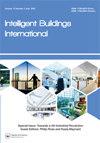The flourishing of Biophilic workplaces: ‘Second Home’ offices as a case study
IF 1.7
Q2 CONSTRUCTION & BUILDING TECHNOLOGY
引用次数: 7
Abstract
ABSTRACT The main purpose of this study is to assess the indoor environmental quality of one of London’s most modern workplaces; it is one which uses the Biophilia design approach, bringing nature inside office buildings. To evaluate the occupants’ well-being, the research uses the Flourish wheel, which is based on both the built environment and the social environment. The built environment part of the study analyses the buildings’ main features and the social environment part uses the qualitative method of interviewing the employees of the ‘Second Home’ company which designed the building. The occupants’ responses provided evidence that Biophilic design is a promising approach to improved health, wellbeing and productivity in the workplace. However, the results show two points related to the company’s use of this design. First, the use of Biophilia as an aesthetic value is not enough to reach the best environmental quality nor the occupants’ expectations in the office environment. The second is that Biophilia needs to go hand in hand with other technological features, all equally well designed for controlling the quality of the indoor environment, such as thermal comfort, air quality, lighting, acoustic comfort, and suitable spatial layout in offices.亲生态工作场所的繁荣:“第二家园”办公室的案例研究
本研究的主要目的是评估伦敦最现代化的工作场所之一的室内环境质量;它采用了“亲生物”的设计方法,将自然带入办公大楼。为了评估居住者的幸福感,研究使用了繁荣轮,这是基于建筑环境和社会环境。研究的建筑环境部分分析了建筑的主要特征,社会环境部分采用了定性的方法,采访了设计该建筑的“第二家园”公司的员工。居住者的反应提供了证据,证明亲生物设计是改善工作场所健康、福祉和生产力的一种有前途的方法。然而,结果显示两点相关的公司使用这种设计。首先,在办公环境中,使用Biophilia作为一种审美价值不足以达到最佳的环境质量,也不足以达到居住者的期望。其次,Biophilia需要与其他技术特征齐头并进,所有这些技术特征都同样设计得很好,以控制室内环境的质量,如热舒适、空气质量、照明、声学舒适和办公室适当的空间布局。
本文章由计算机程序翻译,如有差异,请以英文原文为准。
求助全文
约1分钟内获得全文
求助全文
来源期刊

Intelligent Buildings International
CONSTRUCTION & BUILDING TECHNOLOGY-
CiteScore
4.60
自引率
4.30%
发文量
8
 求助内容:
求助内容: 应助结果提醒方式:
应助结果提醒方式:


